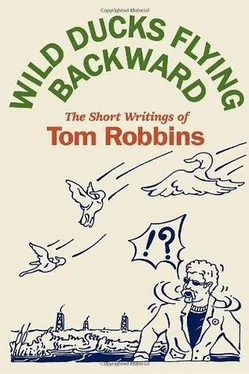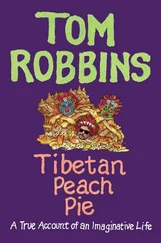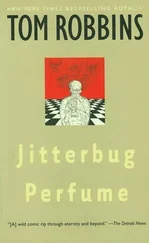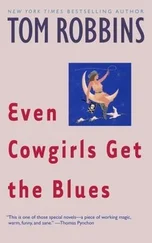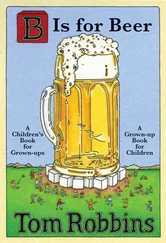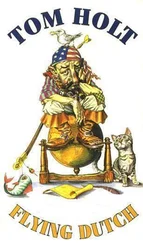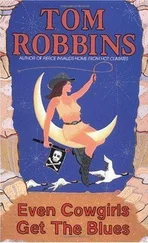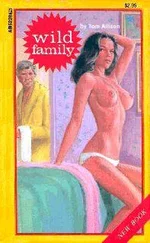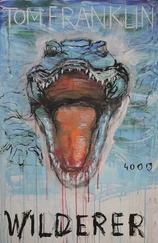The red beet is a melancholy vegetable, always prepared to suffer. And from such turnip you can not get any blood…
The red beet is a murderer who keeps returning to the place of the crime. The red beet predicts what is going to happen when a cherry knocks off the carrot. The red beet is an ancient ancestor of the harvest moon, with beard, buried and fully petrified; of the dark green sails on the lunar boat stitched with elementary plasma; of the kite line which once tied together the Earth and the Moon, to be changed at the end into muddy whisker frantically searching for rubies.
The reader can now draw his or her own conclusions. Obviously, though, some translations are more precise than others. I’ve been told by bilingual readers that until recently, when the insensitive publisher unduly hurried the translator, I’ve been reproduced in Italian with scant loss of meaning or intent; but that the Mexican Spanish version of Even Cowgirls Get the Blues is quite “sleazy,” a description that probably doesn’t displease me as much as it ought.
Incidentally, Jitterbug Perfume in Czech back-translates into Perfume of the Insane Dance . I’m not sure but that I don’t prefer that title to my own. So, if much is lost in translation, something on rare occasions may also be gained.
Leo Kenney and the Geometry of Dreaming
What we have here is a thirty-year record of one man’s search for the Self through art.
It is that poignant and that personal. And because it is an adventure of the imagination, because for Leo Kenney the process of making visible connections between himself and the rest of the universe has been so very nearly ceremony or rite, because at its best his work does not even have the look of Art, the temptation is strong (especially at this flaccid moment in our cultural history) to deal with the Kenney exhibition in metaphysical rather than aesthetic terms.
Happily, however, the formal aspects of Kenney’s painting match the measure of his psychological/philosophical quest. If his meditations on mysterious relationships encompass the physical act of applying pigment to paper and, indeed, overtake it, it is still all there before our eyes, all of it, externalized and none the weaker after hard-nosed analysis. The human imagination has always searched for abstract symbols with which to express itself. We need extend our evaluation of Kenney no further than the actual formal means by which he has manifested that search in order to reach a full experiential appreciation of the visionary phenomena that have informed and intuited it.
First, let us divide Kenney’s lifework thus far into two bodies: that done prior to 1962 and that executed thereafter. Actually, of course, there are several “periods” represented by the sixty-eight works in this retrospective, but, taking a broad view, it is evident that a sharp stylistic demarcation occurred around 1962, when the artist was thirty-seven, was back at art after a fairly long absence, and was contemplating a return to his native Pacific Northwest from California. Freud stresses in his investigations the passages and difficulties of the first half of the human life cycle — those of our infancy and adolescence. Jung, on the other hand, has emphasized the crises of the second half — when, in order to advance, the sun of our being must submit to setting. Thus, at the risk of oversimplification, we might say that before 1962, Leo Kenney was a Freudian painter, after 1962, Jungian.
These categories sound less arbitrary when we note that the “Freudian” paintings are decidedly flavored with Surrealism, their subject matter and optical placements a testimony to that teeming, Freud-discovered substratum of consciousness wherein the distinction between the sensory and the intellectual functioning of the mind is erased. The pictures that we shall call “Jungian” employ a much more clarified, accessible, and universal set of symbols, presented in an oceanic atmosphere of radiance and calm.
Speaking of subject matter, the “Freudian” paintings contain an abundance of it. This is figurative work, on both a literal and symbolic level. The central configuration in The Inception of Magic, the earliest work (1945) in the show, is a human torso, complete with distended womb, through which flow all manner of physical and psychic forces, and which is composed of an orchestrated synthesis of macrocosmic and microcosmic imagery. As late as 1961, in Relic of the Sun, this same torso is dealt with again, although now the emphasis is on volume rather than on line, on archetypal shape rather than on internal energies.
The representational figures and objects of the “Freudian” period are quite linear. Frequently, Kenney combined ink drawing with water-soluble paints (although there are several fine oils in this show, Kenney is by inclination and reputation a watercolorist and that is how we shall regard him). His line here is precise, intense, as architectural as organic but absolutely throbbing with sensuality. His color is subdued and subordinate, often no more than a tonal exercise in grays.
These works are literary to the point of being reading rather than visual experiences. Hermetic, romantic, incredibly introspective, they are packed edge to edge with images-within-images, heads dreaming other heads, emotions and thoughts stylized into symbols — in short, they are overloaded with the cerebral speculations, philosophical yearnings, and erotic anxieties of a brilliant young provincial who had rejected all formal education and then proceeded to drink himself giddy on art books, Surrealist and Symbolist poetry, West Coast art museum collections, and the ceremonial trappings of the Catholic Church, which he attended until his early teens.
Today, such painting is hardly fashionable, and Kenney’s “Freudian” pictures may seem stilted and theatrical. They are, also, extremely moving. Moreover, the loving, even obsessive, attention that he lavished on his enigmatic juxtapositions, his quasi-Renaissance perspectives, his hallucinatory unfoldings and planar undulations often produced pictures of real beauty. In Night Swimmer II, for example, the timing of the various pictorial elements is so exquisite as to transport the viewer beyond considerations of iconography.
Kenney’s “Freudian” paintings — and in distillation, the later work, too — have an affinity with, if not a debt to, Giorgio de Chirico, Henry Moore, Max Ernst, and the Salvador Dali of the Soft Construction With Boiled Beans persuasion; with Neo-Romanticism and perhaps even Synthetic Cubism. It is best to place him in that sort of international context. While his presence on the doorsteps of Mark Tobey, Guy Anderson, and, especially, Morris Graves was a source of strength and inspiration for him, and while he shares a few of those artists’ general characteristics, it is misleading to see Kenney as a younger but bona fide member of a so-called “Northwest School.” He creates from an intuitive and individual imperative, with ties to many eras and areas of art.
It is no labor to find evolutionary continuity in Kenney’s work. The forms from the early pictures are echoed in the later, and the artist maintains his philosophical proclivities. But, following a deeply mystical personal experience in 1962, a purification took place. The “Freudian” paintings were stripped of extraneous and overtly figurative imagery; concerns were clarified, simplified, abstracted, and placed in the mainstream of the collective unconscious. In the “Jungian” works, Kenney employs a few simple, ancient geometric devices in variation — most often the circle and the square in that order.
Of all emblems, the circle or “tondo” is the most soaked with meaning. From dimmest pre-history, it has symbolized the sun, whose power, in one disguise or another, flows through all matter. It represents, too, the seed and the cell, the head, the halo and the corona, bodily orifices, Zodiac wheels, the earth, the eye, and the egg, the unbroken cycle of life and the continuity of consciousness. In Kenney’s hands it alludes unspecifically to all these things, as well as to what Tibetans call the “mysterious golden flower of the soul.” Kenney’s tondos are magic mirrors that objectify subjectives.
Читать дальше
